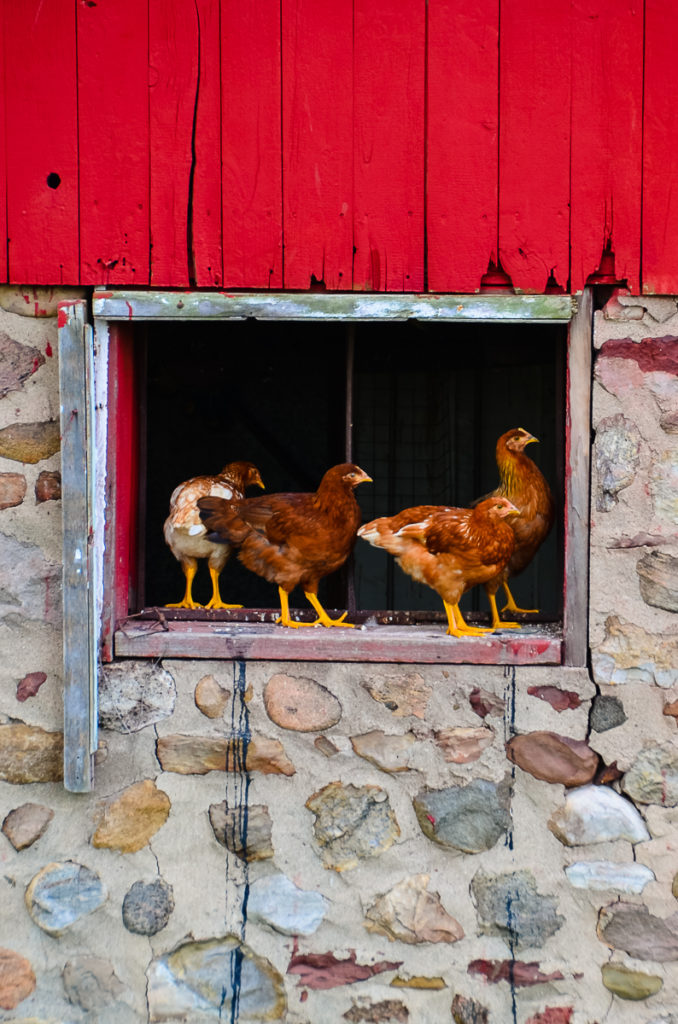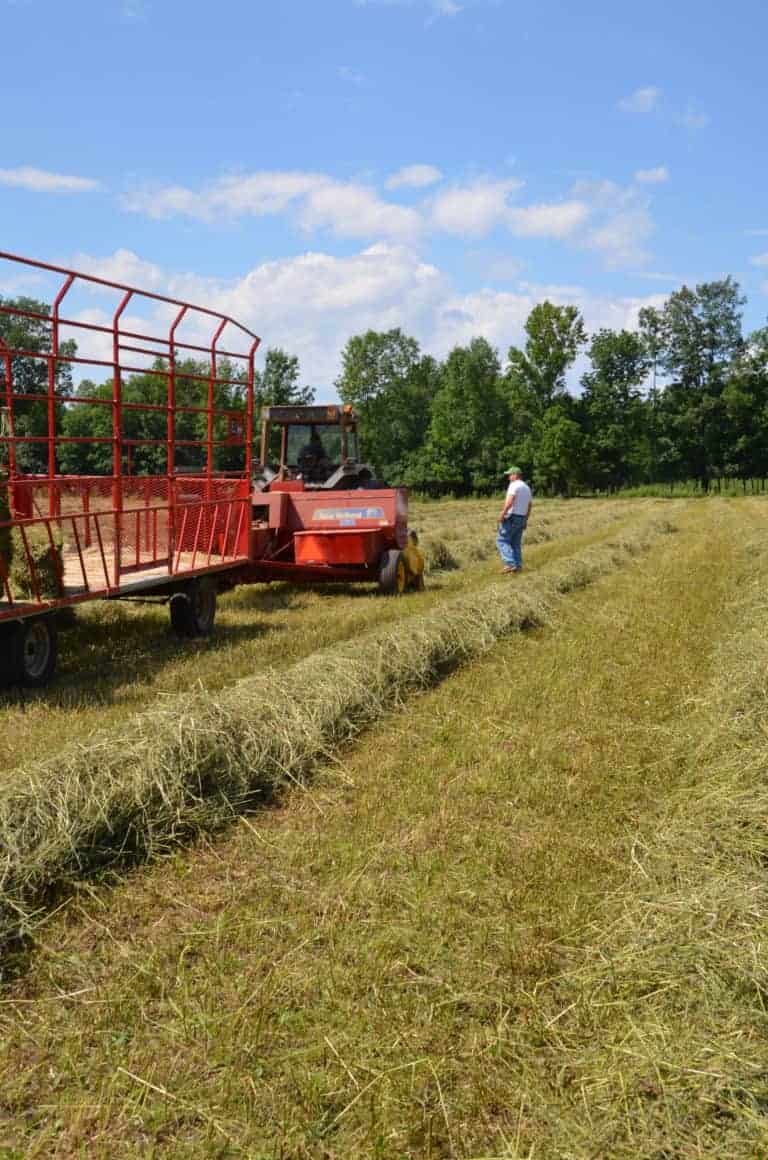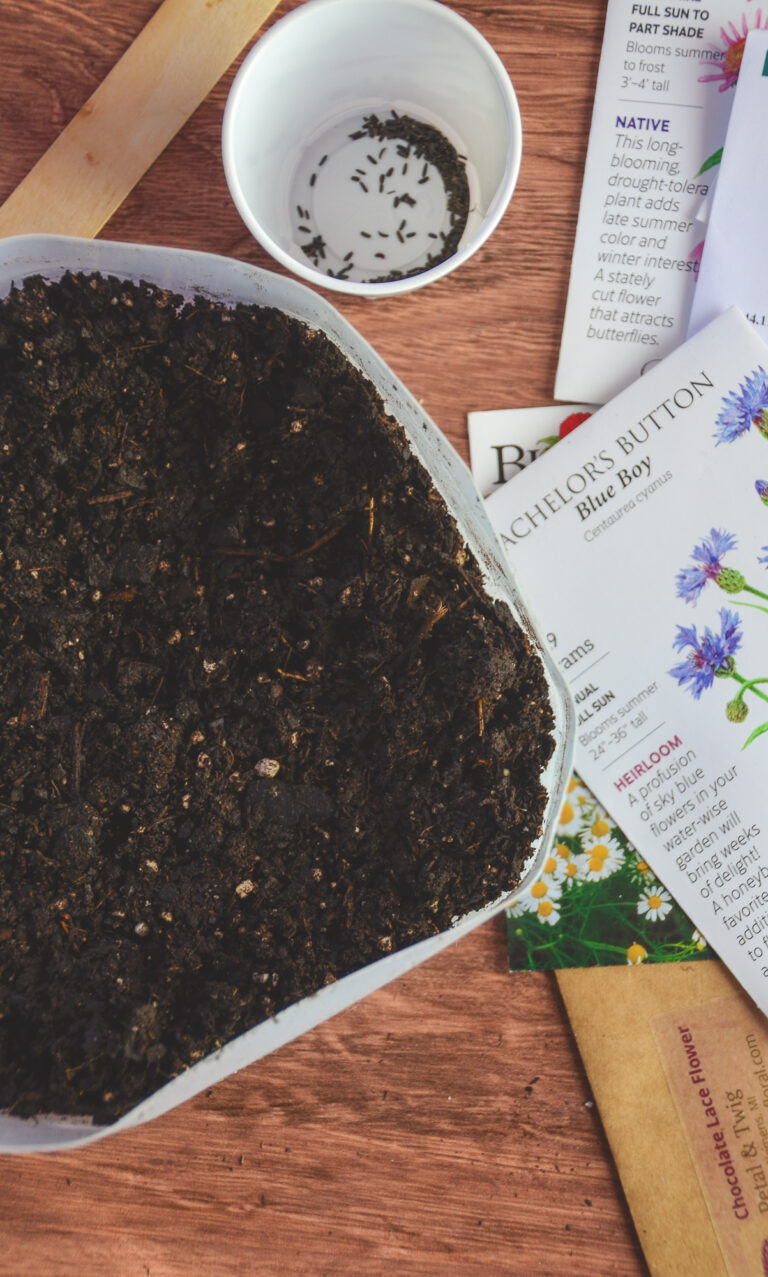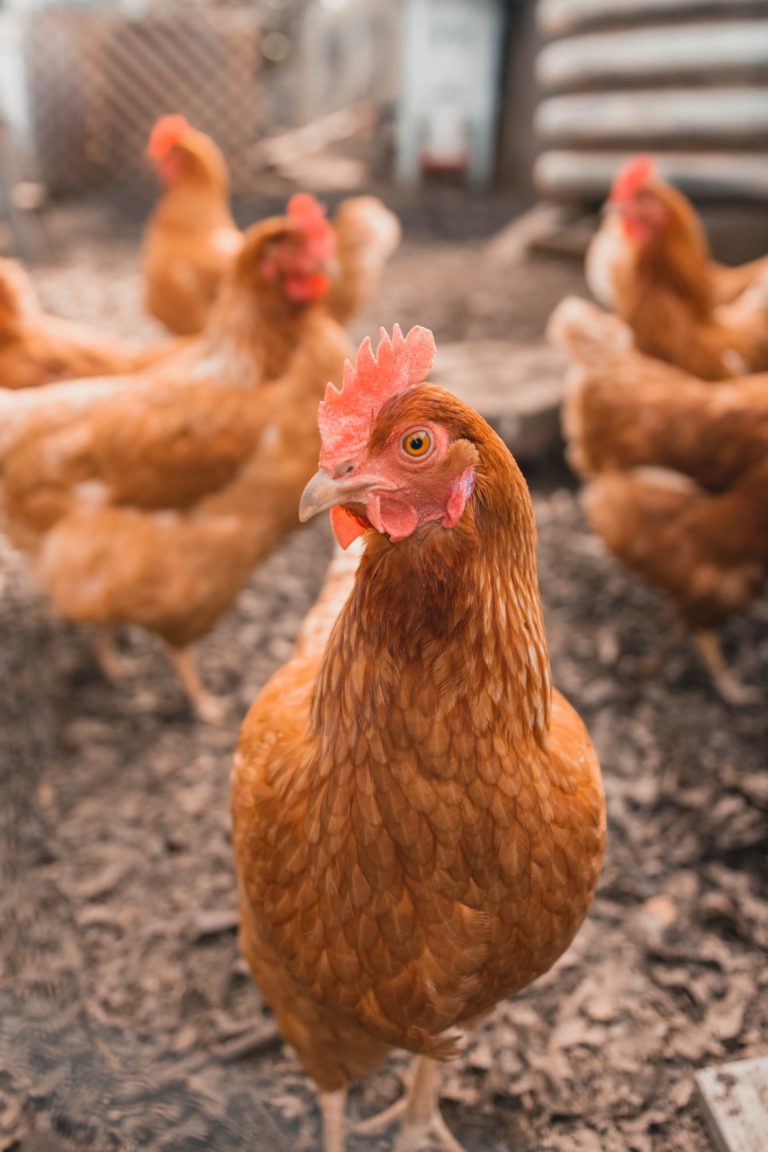Eveything You Need To Know About Deep Litter Bedding In a Chicken Coop

When managed properly, the deep litter method provedes your chickens with dry, fluffy and absorbent bedding, and you will have a happier, healthier flock with less maintenance.
If you have a backyard chicken flock, you know there are two things you must manage to keep your flock healthy and happy: poop and predators. Today we are chatting about the scoop on poop in the coop, and a popular chicken waste management practice known as the deep litter method.
What is the Deep Litter System?
The Deep litter method of chicken coop management is a tried and true way to deal with chicken waste. Farmers have been utilizing the deep litter method in all sorts of situations, including small livestock pens like goats, pigs and sheep for years. According to a research paper written by the Ohio Agricultural Experiment Station in 1959 The Deep Litter Method (referred to as Built-up litter) came into use during World War II as a means of saving labor and litter.
Basically, instead of shoveling out and replacing chicken coop litter frequently, you allow the chicken manure and bedding material to accumulate and decompose inside the coop. Just like a kitchen compost pile, the beneficial microbes and good bacteria help control pathogens, and break chicken manure down.
In the right setting, and if you manage the deep litter properly, your chickens will have dry, fluffy and absorbent bedding to enjoy, and you will have a happier, healthier flock with less maintenance. Plus, by early spring, you will have a nice supply of composted litter for your garden.
Why Use the Deep Litter Method?
The deep litter method is a serious time and money saver, but it also is healthy for the chickens. It can help prevent infestations of parasites such as lice and mites. There is also evidence deep litter can help protect your flock from coccidiosis. Coccidiosis is a potentially deadly intestinal parasite, the good microbes in the deep litter will destroy the coccidia bacteria.
How To Start A Deep Litter System
Start by spreading a 3- to 4-inch layer of clean litter on the floor of the coop. About once a week, as the manure accumulates, use a pitchfork or rake to turn over droppings, and toss on another clean thin layer of pine shavings. If you see any caked litter, use a rake or fork to help break up the clumps and redistribute the moisture. You should not notice any odor of ammonia. If you do, add more litter. This is also a good time to make sure the bedding isn’t too wet. Wet spots from leaky waterers, can be the perfect breeding spot for mold and fungus
Once the litter reaches a foot or so in height, it’s time to start removing it, bit by bit. Take a few inches off the top until you’re back to the four- to six-inch height. This will make the pile more manageable for your chickens and the composition process.
When it’s time for some spring cleaning at the end of winter, don’t feel like you have to take everything out. Actually, you should avoid doing this. Leave a few inches on the bottom of the coop floor. It will help jumpstart the next batch as all of the microbes will already be in place.
What Bedding is Best To Use With the Deep Litter Method?
I personally like compressed pelleted pine shavings. Compressed pelleted pine shavings are usually marketed as equine bedding, but they work like a dream in the chicken coop for the deep litter method.
Pine shavings are a more cost effective bedding option that work great with the deep litter system. I typically can get a bale of pine shavings for under $6. I personally have not had any luck with straw for deep litter, it doesn’t seem absorbent enough for my situation which includes ducks.
What Kind of Coop Can You Use the Deep Litter Method in?
The deep litter method is great for big, and small coops! But there are two important considerations you must take before you start implementing the deep litter method: Ventilation and the flooring type.
Ideally you coop should be well ventilated regardless of how frequently you change your bedding, but if you are using the deep litter method it is crucial your coop be well-ventilated. If you can, invest some time in making sure your coop has open eaves and good cross-ventilation. Take care to make sure there should be no heavy drafts, though, especially in this space above the roosts. Ventilation is important because it will give the built-up moisture and ammonia a place to escape.
The flooring of your coop heavily influences how successfully you can implement the deep litter method. Deep litter seems to work best in a coop that has a dirt floor, but it can be successfully done on concrete or wood as well. If you have a wood floor you will want to pay close attention to how the deep litter is affecting the flooring, as the composting process can actually begin to break down and rot the wood. I have concrete pavers, set on top of crushed gravel in my coop, and while this setup does help with drainage during wet years I’ve found dampness from the ground will leech up into the coop, and I will run across wet clumps of wet shavings on the bottom layer of my litter, but this is easily remedied by staying on top of turning over the litter weekly.
How Often Should You Turn Over The Litter in the Coop?
Most likely your chickens will lend a hand, or leg with the task of aerating the bedding. Chickens love to scratch and look for bugs and stray food crumbles, and will most likely be scratching around in the coop daily. However, on occasion, you will still need to turn over the litter that has been overlooked by your birds. To turn over the bedding, use a pitchfork or rake to turn over droppings. It’s always a good idea to protect your lungs, and I wear a N95 dust mask when I’m turning over the chickens bedding.
If you’d like, you can spread a handful of scratch grains or food scraps daily on the bedding to encourage your chickens will stir the litter for you, incorporating oxygen to aid decomposition.
Can You Use Diatomaceous Earth in A Deep Litter System?
Diatomaceous earth is naturally drying. It will dry out the litter in your coop and can kill off the beneficial microorganisms you are trying to encourage.
If you’re using Diatomaceous Earth to control for parasites like mites and lice, use it outdoors in a dust bath or run instead. If you are interested in sprinkling something in the coop to complment the composting process and help with odors, Coop ‘N Compost (affiliate link) will reduce odors and moisture, while improving the quality of your composted litter.
How Often Should You Strip the Coop Down and Deep Clean it?
Starting a deep litter system in your coop is one of the simplest ways to get the most out of your chicken bedding. This system will not only save time and money in the long run, but it’s always the perfect way to keep your flock entertained, as well as providing a powerful boost to the health of your garden.
Remember that chicken manure is “hot” compost, which means if it is not properly aged the nitrogen in the compost could burn and kill plants in your garden. When you empty your coop, some of that manure will be 6 months old, but some of it will be brand new, so it still needs to go into the compost bin before being added to your garden.








I’m debating between deep litter and sand in my new coops they have block floors and a 12 inch high block border however because of predators they have to be kept in runs that only have solar panels and fence for the top I had hoped to use the same method for both the coop and run but with rain and such I assume that would be a problem for the deep litter method or with it being open will it work in the run
I used deep litter method in my coop for a long time. I used horse bedding. Chopped hemp, its very observant. I use to clear half of this litter once a year and I use to top up with a fresh batch. Every morning throw a handful of corn onto the litter and slightly turn with garden rake infront of tour girls. Chicken will turn over your pile all day looking for corn. I had 0 smell in my coop. I never use pine shaving or saw dust. If you do, make sure it’s dust extracted. I had healthy 10 hens and a cock.
Hello,
The last question wasn’t directly answered…How often should I fully empty the coop using this method?
From what I gather it’s 1 or 2 times per year, but I want to make sure I have the info correct.
If I clean it out right before winter, I can put the fresh compost on the garden beds & it will be cool by spring. But I don’t want a ton of heat in the summer time either when it’s already 90-100 degrees outside. What do you suggest?
I’d love some insight on my situation if you don’t mind. I built a goat shelter using pallets a couple years ago. Straw and hay was used in top of a dirt floor for a deep bedding method. Since October though, we moved the goats to another location and built a new shelter. We altered the old goat shelter and added hardware fabric to make it a chicken coop. I didn’t change anything in the floor or deep bedding method. Just added chickens to it starting in February. I now have 22 chickens in there. I use a combo of hay and pine shavings on the floor but haven’t made sure it was super dry. It’s not super muddy at all, just a little moist. They free range all day over an acre ish and mostly just come into the coop at night only and all roost up in roosting bars.
Well, I was just made aware that a chicken I gave a friend has lice. I found at least one other that has it and will need to examine everyone and take steps to remedy the situation. What should I change about the bedding? It was suggested that I remove all of it (it’s likely 8” deep) and burn it all. I was also recommended an insecticide to spray but I would really really rather not do that. We have a Mason Be‘s active right now. Hundreds and hundreds of them as I am a beekeeper. I’ve never turned the bedding either but will start to.
Hey Jenni,
Chicken lice and mites happen, it doesn’t mean you are doing anything wrong! But they can stress the chickens and cause health issues if left unchecked. I am not a vet, but I can tell you what I would do.
I do agree with the advice to remove all the bedding. I know it is going to be a lot of work for you, but I am afraid if you treat the birds and leave the coop untreated it won’t take long for your birds to get re-infested. I completely understand your hesitation to treat the coop given you raise bees, and I would contact your local Cooperative Extension and ask to speak with someone in the bee keeper program or chicken program and see if they can recommend a treatment that is the least toxic pesticide with the shortest residual activity to get the job done. I would also ask if power washing or pressure washing the coop once the bedding is removed would be an option to clean up the coop and rid it of eggs and nits.
Active infestations can be difficult to treat, I wish I could be more helpful, but I’d love to hear how you decide to move forward, keep me posted!
@Jenni, you can use a good decently thick layer of sand to create a hermetic/anti microbial seal and try to also keep your chickens high off the ground with blocks or perch bars and after a month+ they will cycle out without a host if quarantined right.